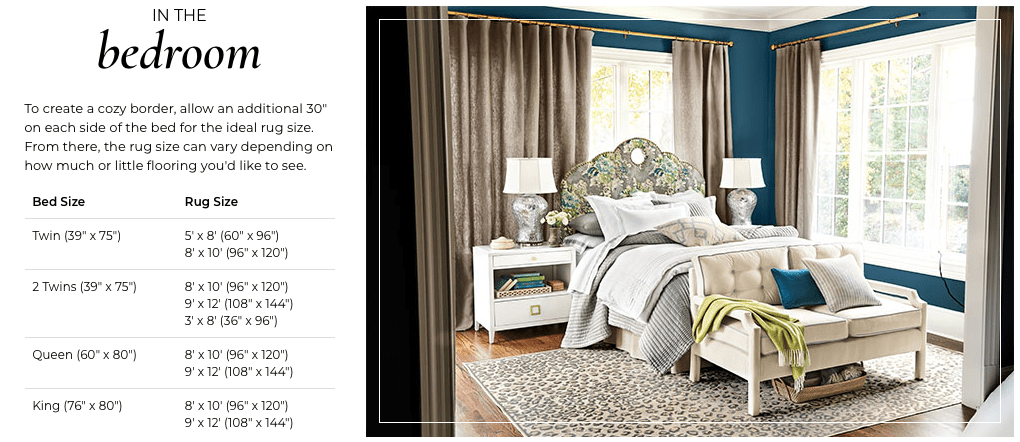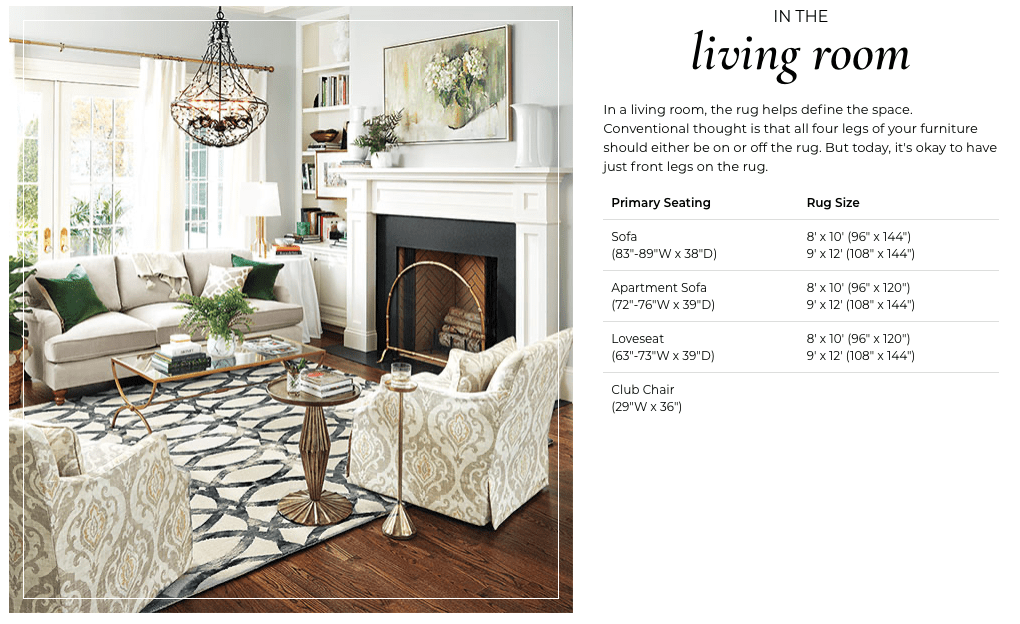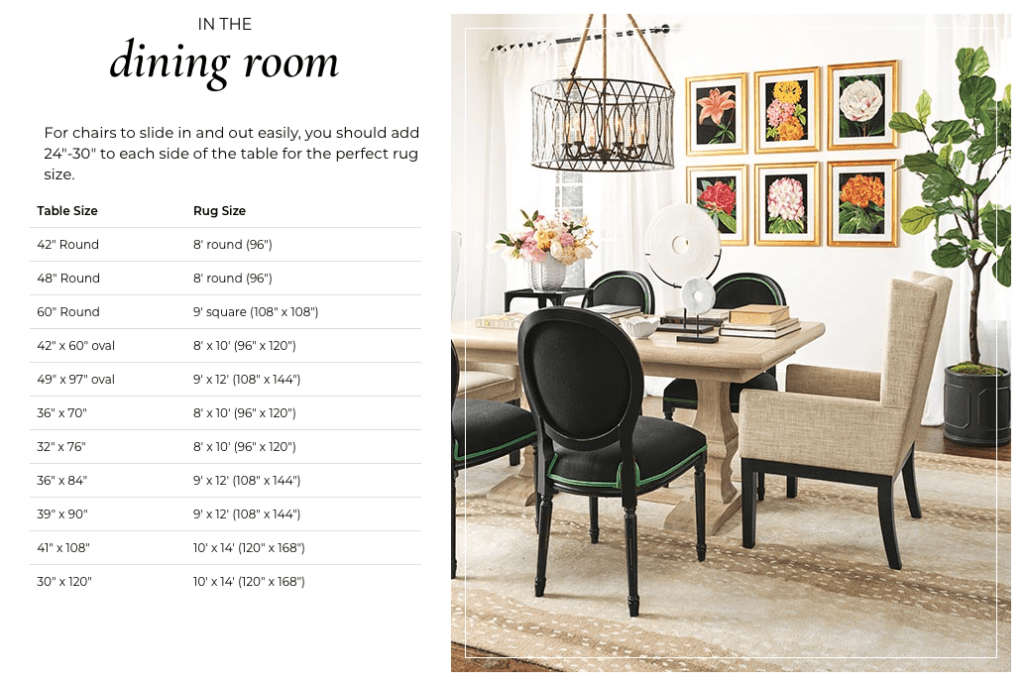
Your bedroom should be your personal sanctuary, a haven of peace and relaxation. And while furniture and décor are essential elements, the right rug can truly transform the space, adding warmth, texture, and style. But simply throwing a rug on the floor isn’t enough. Strategic placement is key to maximizing its impact. This guide will walk you through everything you need to know about choosing and placing the perfect rug for your bedroom.
1. Size Matters: Finding the Right Fit
Before you even think about placement, you need the right rug size. This depends largely on the size of your room and the placement of your furniture. Here are some general guidelines:
- Large Bedrooms: In spacious rooms, you can often go for a large rug that extends beyond the bed and nightstands, creating a luxurious and expansive feel. Consider a rug that covers most of the floor space, leaving about 18-24 inches of bare floor around the perimeter of the room.
- Medium-Sized Bedrooms: A rug that extends beyond the sides and foot of the bed by at least 18-24 inches is a good option. This allows you to step onto the rug comfortably when getting out of bed.
- Small Bedrooms: In smaller rooms, you might opt for a rug that sits just under the bed, extending a few feet beyond the foot. Alternatively, you could place a smaller rug beside the bed to add a touch of warmth and texture.
2. Anchoring Your Bed: The Foundation of the Room
The most important principle of rug placement is to anchor your bed. Ensure that your bed, at minimum, sits entirely on the rug. This creates a defined sleeping area and provides a soft, comfortable surface for your feet. For larger rugs, the nightstands should also sit at least partially on the rug.
3. Connecting Your Furniture: Creating Cohesion
Don’t let your nightstands and dresser float aimlessly. Position them so they sit partially on the rug. This creates a sense of connection and visual harmony, pulling the entire room together and preventing the furniture from feeling disjointed. If you have a bench at the foot of your bed, ensure it also sits on the rug.
4. Texture and Color: Setting the Mood
The rug itself is more than just a floor covering; it’s a design element that contributes to the overall ambiance of your bedroom. Consider the texture and color carefully:
- Texture: A plush, high-pile rug adds warmth, comfort, and a touch of luxury. A low-pile rug is more durable and easier to clean, making it a practical choice for high-traffic areas. Consider the feel underfoot and how it complements your existing décor.
- Color: The color of your rug can significantly impact the mood of your bedroom. A light-colored rug can make a small room feel larger and brighter, while a dark rug can add depth and drama. Choose a color that complements your bedding, curtains, and wall color for a cohesive look. Don’t be afraid to experiment with patterns, but ensure they harmonize with the overall style of the room.
5. Beyond the Bed: Exploring Other Options
While anchoring the bed is the most common approach, there are other ways to use rugs in your bedroom. Consider placing a smaller rug in front of a dresser or seating area to define the space and add visual interest.
6. Practical Considerations: Material and Maintenance
Think about the material of your rug and how it will hold up to wear and tear. Consider factors like foot traffic, allergies, and ease of cleaning. Natural fibers like wool and cotton are beautiful but can be more difficult to maintain. Synthetic fibers are often more durable and easier to clean.
By carefully considering these factors, you can choose and place the perfect rug to transform your bedroom into a cozy, stylish, and inviting sanctuary.


A well-chosen rug can be the key to transforming your living room from a collection of furniture into a cohesive and inviting space. But simply throwing a rug down isn’t enough. Just like choosing the right sofa or coffee table, rug selection and placement require careful consideration. Here’s a guide to help you master the art of rug placement and elevate your living room’s style:
Size Matters: The Foundation of Your Seating Arrangement
The most crucial element of rug placement is size. Your rug should be large enough to anchor your seating arrangement, creating a unified and grounded look. A common mistake is choosing a rug that’s too small, leaving your furniture floating awkwardly. The ideal scenario? The front legs of all your main furniture pieces – sofa, armchairs, etc. – should sit comfortably on the rug. This creates a visual connection and defines the seating area. If your furniture is arranged against a wall, at least the front two legs of each piece should be on the rug. Don’t be afraid to go bigger than you initially think you need!
Balance and Symmetry: Creating Visual Harmony
Think about the overall balance and symmetry of your living room. A centered rug can create a formal and symmetrical atmosphere, perfect for a traditional or classically styled space. This works particularly well when your furniture is also arranged symmetrically around a focal point, like a fireplace. On the other hand, an off-center rug placement can add a touch of asymmetry and visual interest, lending a more relaxed and contemporary feel. This can be a great option if your furniture arrangement is more eclectic or if you want to create a focal point away from the center of the room. Experiment with different placements to see what works best for your space and style.
Texture and Color: Setting the Mood
Beyond size and placement, the rug itself plays a vital role in the overall aesthetic of your living room. The texture and color you choose can dramatically impact the mood and feel of the space.
- Texture: A plush, high-pile rug adds warmth and comfort underfoot, creating a cozy and inviting atmosphere. A low-pile rug, on the other hand, is often more durable and easier to clean, making it a practical choice for high-traffic areas. Consider the overall style of your living room and choose a texture that complements it.
- Color: The color of your rug can set the tone for the entire room. A bold, patterned rug can become a striking focal point, adding personality and vibrancy. A neutral rug, on the other hand, provides a calming backdrop and allows other elements in the room to shine. Consider the existing colors in your living room and choose a rug that complements them. Don’t be afraid to experiment with patterns and textures, but ensure they harmonize with your overall décor.
By paying attention to these key elements – size, balance, and texture/color – you can choose and place the perfect rug to transform your living room into a stylish, comfortable, and inviting space that you’ll love spending time in.


A dining room rug can add warmth, style, and comfort to your dining space. But with so many options available, choosing the right rug can be overwhelming. This guide will walk you through the key considerations for selecting the perfect dining room rug.
Dining Table Placement
The first step in choosing a dining room rug is to consider the placement of your dining table. Ensure the entire dining table and chairs are on the rug when pulled out for dining. This creates a cohesive and inviting dining area, while also protecting your floors from scratches and spills.
Rug Size
The size of your rug is crucial for both aesthetics and functionality. Choose a rug that’s large enough to extend beyond the chairs when pulled out. This prevents chairs from scraping the floor and adds a finished look to the space. As a general rule, the rug should be at least 24 inches wider than the table on all sides.
Texture and Color
The texture and color of your dining room rug should complement the overall style of your dining room. A bold patterned rug can add a touch of personality and become a focal point, while a neutral rug can create a calming backdrop and allow other elements in the room to shine.
Consider the following when choosing the texture and color of your rug:
- Material: Wool rugs are durable and luxurious, while cotton rugs are more affordable and easy to clean. Synthetic rugs are a good option for high-traffic areas as they are stain-resistant and easy to maintain.
- Color: Choose a color that complements the existing furniture and décor in your dining room. A rug that is too light or too dark can make the space feel unbalanced.
- Pattern: A patterned rug can add visual interest to the room, but make sure the pattern is not too overwhelming. If you have a lot of patterns in your dining room already, a solid-colored rug might be a better choice.
By following these guidelines, you can choose a dining room rug that is both beautiful and functional, creating a warm and inviting space for family and friends to gather.


